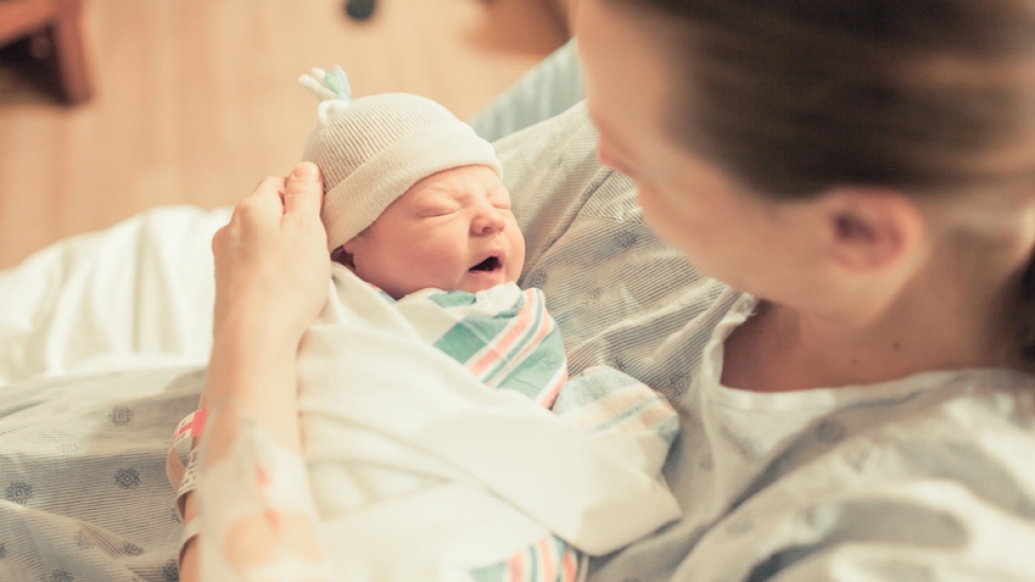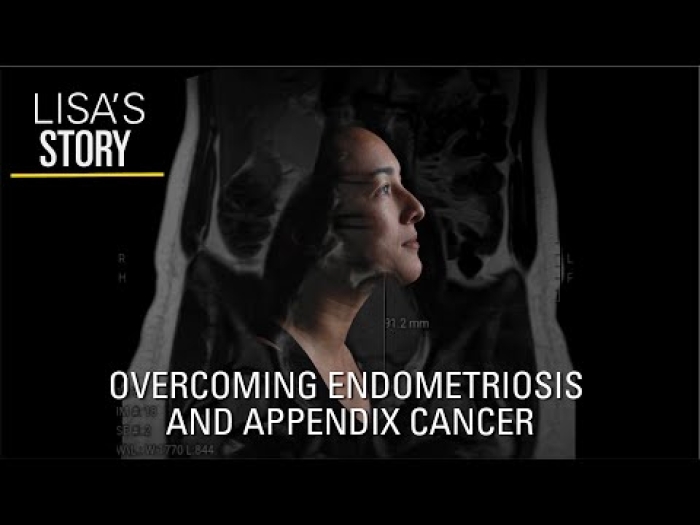As the number of cesarean deliveries continues to rise, experts call for the widespread adoption of a proven method to improve postpartum healing and recovery.
11:00 AM
Author |

Nearly a third of birthing moms now deliver babies via cesarean section — and many of them go home with powerful opioid painkillers.
But there's a better way to take care of patients after C-sections to help them heal faster and manage pain without increasing their risk of long-term opioid use, Michigan Medicine researchers say in a new publication in the American Journal of Obstetrics & Gynecology.
LISTEN UP: Add the new Michigan Medicine News Break to your Alexa-enabled device, or subscribe to our daily audio updates on iTunes, Google Play and Stitcher.
Standardized, evidence-based pain management protocols that lessen opioid use have been used successfully at a handful of institutions around the country, including at the University of Michigan's Von Voigtlander Women's Hospital. U-M has seen opioid prescription levels for cesarean deliveries drop to nearly the same as for vaginal births.
But these care bundles, which involve a set of interventions to improve patient outcomes, need to be more widespread to benefit more birthing moms no matter where they deliver, U-M authors say.
"Cesarean delivery is the most common abdominal surgery in the world. Despite persistent concerns about high cesarean delivery rates internationally, there has been less attention on improving perioperative outcomes for birthing moms," says lead author Alex Peahl, M.D., a U-M OB-GYN and national clinician scholar with the U-M Institute for Healthcare Policy and Innovation.
"We need to make sure moms are safe in the postpartum period and are receiving the highest-quality care possible," she says. "This includes helping patients achieve greater pain control with less opioids."
SEE ALSO: As Opioids Kill More Veterans, Study Shows Treatment Needs
More effective birth pain management is crucial at a time when there are increasing concerns for higher cesarean rates, maternal mortality and morbidity, and risk of persistent opioid use among birthing moms, the authors say.
Research suggests that women are at greater risk of persistent opioid use after the postoperative period if an opioid is prescribed.
Pain control starts early
Authors highlight a pain management protocol called Enhanced Recovery After Surgery, which has more commonly been implemented for other types of surgeries, including hysterectomies, but has been slower to be used broadly for cesarean deliveries. While intended for planned surgeries, authors say the strategy is also effective for unplanned C-sections.
ERAS involves a combination of long-acting opioids that last for 18 hours after delivery — reducing the patient's pain immediately after the C-section — and alternating non-narcotic medications around the clock to limit inpatient morphine use.
"The goal is to get on top of the pain before the surgery even starts," Peahl says. "Pain is like a mountain. It's much harder to come down once you're at the top."
"We are offering a longer, more even level of pain control to keep patients comfortable through the day. This helps avoid those high peaks of pain that are much harder to come down from quickly and when the most potent painkillers are often used for immediate relief."
Ensuring high-quality care after all C-sections
ERAS could also potentially lower health care costs by shortening hospital stays. Authors note that ERAS protocols have facilitated next-day discharge without an increase in readmission rates for up to 25 percent of patients leaving the hospital the day after a C-section.
MORE FROM MICHIGAN: Sign up for our weekly newsletter
"This is a promising intervention to standardize care for millions of women who undergo a cesarean delivery every year," Peahl says. "We wanted to share evidence for the potential of these strategies improving the quality of care and patient satisfaction while reducing overall health care costs."
Despite its proven effectiveness, several barriers may deter wide implementation of opioid-sparing pain methods like ERAS — which may require shifting some elements of care from hospitals to clinics and developing more robust connections between care settings. U-M, for example, is employing new strategies to further improve patients' pain management through educational materials and shared decision-making at discharge.
But once implemented, the protocol is simple to follow and has the potential to make it much easier for care teams to manage pain control, Peahl says.
"Not only have these patients just had surgery, but they are also new moms," she says. "Helping them recover from surgery and improving their time with their new infants is crucial.
"Standardizing the process and care provided after C-sections is one step to helping ensure that every woman, regardless of demographics or where she lives, receives the same high-quality level of care throughout the birth experience."

Explore a variety of healthcare news & stories by visiting the Health Lab home page for more articles.

Department of Communication at Michigan Medicine
Want top health & research news weekly? Sign up for Health Lab’s newsletters today!





